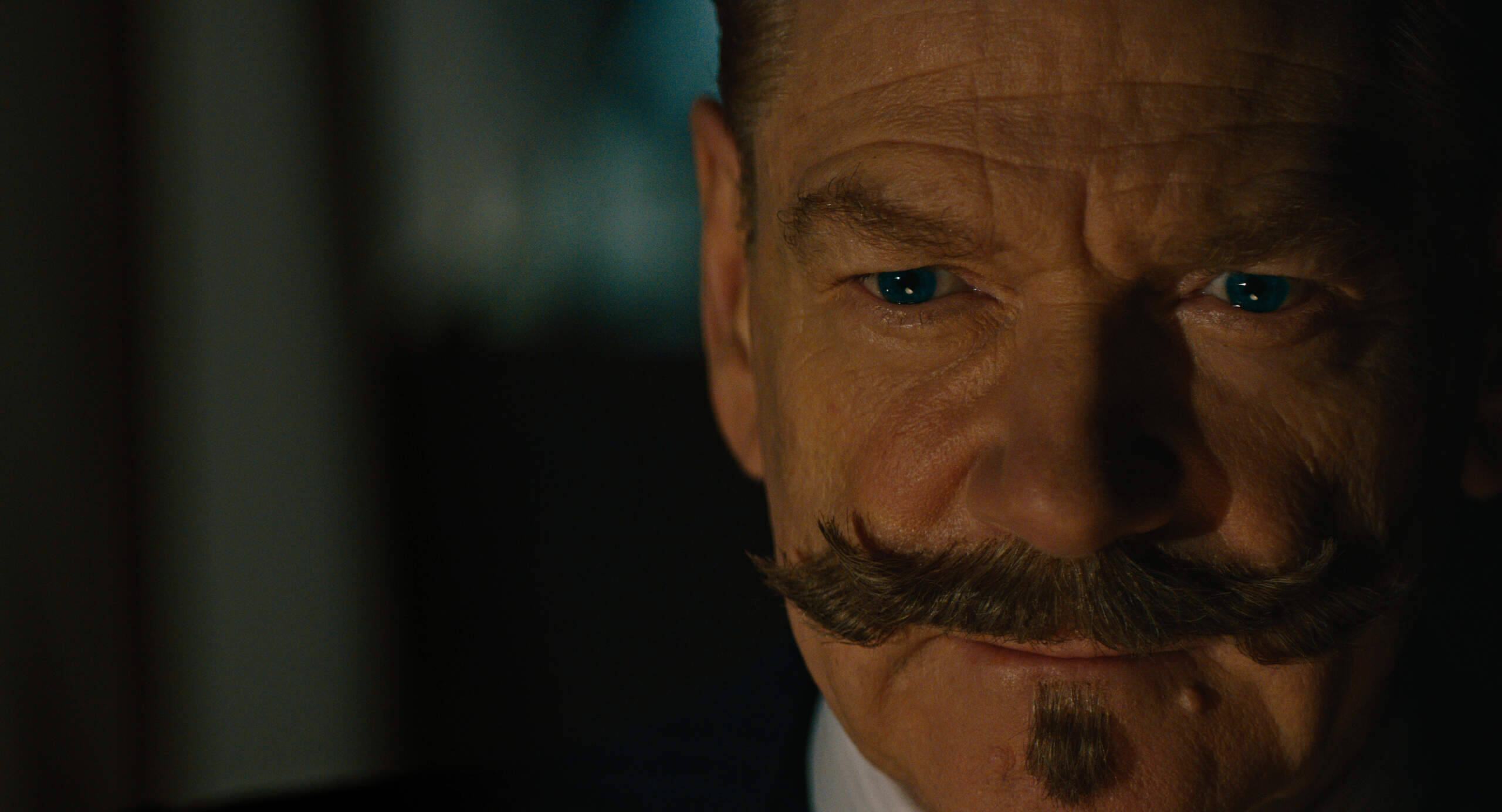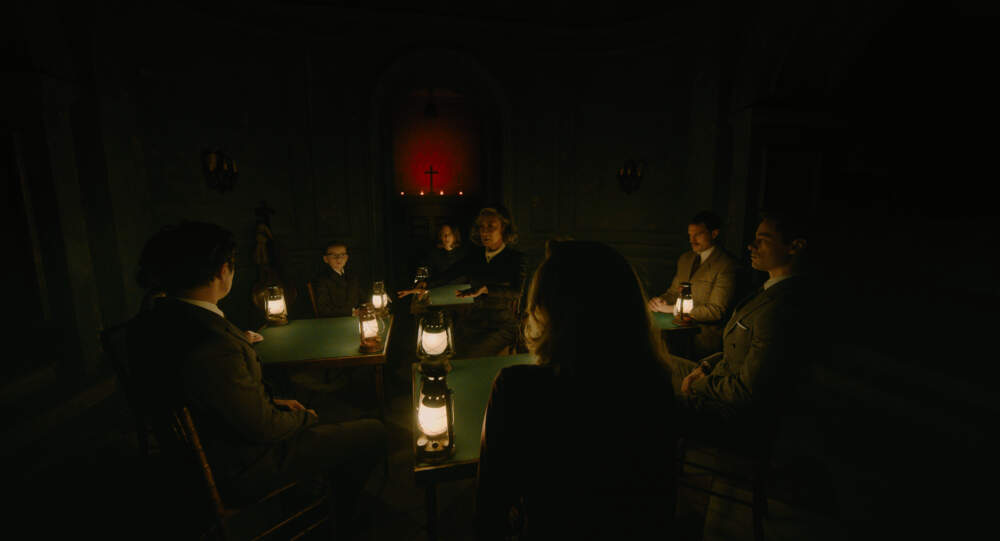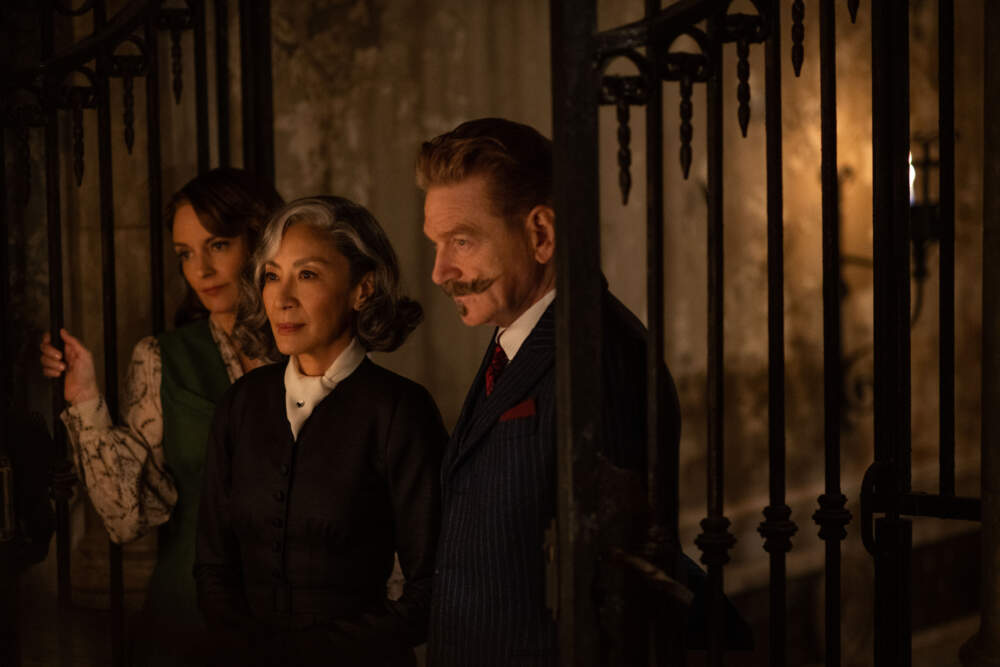Advertisement
Review
Hercule Poirot carries more burdens than ever before in 'A Haunting in Venice'

Hercule Poirot appeared in 33 Agatha Christie novels and 51 of her short stories, as well as countless film, theater, radio and television adaptations. The longest-running of these, “Agatha Christie’s Poirot,” starring David Suchet as the mustachioed sleuth, wrapped up 10 years ago after 13 seasons on British TV. First played by Charles Laughton on the West End stage in 1928, the character has been embodied by José Ferrer, Albert Finney, Peter Ustinov, Tony Randall and even Hugh Laurie for a throwaway gag in the 1997 Spice Girls movie “Spice World.” But I’d wager that the world’s greatest detective has never been as depressed as he is in Kenneth Branagh’s current incarnation, playing Poirot as a gloomy Gus whose mood is inversely proportional to the silliness of his mustache.
“A Haunting in Venice” is Branagh’s third take on Christie’s character, following 2017’s surprisingly successful (if decidedly mediocre) “Murder on the Orient Express” and its troubled follow-up “Death on the Nile,” which was shot in 2019 but didn’t hit theaters until last year due to the pandemic and other unseemly offscreen dramas. A good deal sadder and more svelte than earlier interpretations, Branagh’s Poirot is burdened by his superior intelligence and tormented by obsessive-compulsive disorder, though that condition has been scaled back a bit as the series has worn on. Directing as well as starring, Branagh clearly sees this as his highbrow superhero franchise. He’s even hired screenwriter Michael Green of “Logan,” “Green Lantern” and the “Smallville” series to pen Marvel-brained additions to Christie’s lore, like beginning “Death on the Nile” with an unintentionally hilarious origin story for Poirot’s facial hair.
It’s not so much that these alterations are heretical to the Poirot canon — if you ask me, more movies should be less precious about their source material. But Branagh’s additions just aren’t any fun. His dour, humorless approach is presumably an intentional pivot away from our movie memories of Peter Ustinov stuffing his face and yukking it up with David Niven. (It’s also wise not to try and compete with Rian Johnson and Daniel Craig’s “Knives Out” series in the detective comedy sweepstakes.) But nobody goes to a Hercule Poirot movie to watch him be miserable over lost lovers and dead friends. The fleet pleasures of Christie’s mysteries get lost in all the downbeat bombast, with “A Haunting in Venice” being the most joyless of the Branagh films thus far, frog-marching the character through a grim case he doesn’t even want to be solving.

A hermit living alone in postwar Italy, Poirot is dragged out of retirement by his old friend, the mystery novelist Ariadne Oliver. She’s Christie’s cheeky self-caricature, famous for books about a Finnish detective who sounds awfully similar to someone we know. In one of Branagh’s characteristically bizarre casting choices, Mrs. Oliver is played by Tina Fey, whose jarringly contemporary line readings constantly undercut the period atmosphere. (You keep expecting her to pitch a podcast called “Only Murders in the Palazzo.”)
She wants Poirot to help her debunk a famous psychic (Michelle Yeoh) at a séance being held on Halloween night. But when the party doesn’t go at all as planned, we’re once again trapped in a palatial estate full of suspects with motives for murder while a storm raging outside has flooded the Venice canals. Oh, and there also might be a ghost. The daughter of the property’s owner, who drowned years ago, keeps popping up whenever Poirot looks in the mirror, bearing a possibly actionable resemblance to the little girl from “The Ring.” It’s clear from what follows that Branagh saw the “Conjuring” movies and liked them very much, swiping several setups and scares while also enlisting his pint-sized “Belfast” alter-ego Jude Hill to, for all intents and purposes, play Haley Joel Osment from “The Sixth Sense.” It’s hard not to wish that Branagh would instead steal from himself, as the director’s wonderfully nutty 1991 sophomore effort “Dead Again” was full of the feverish Gothic horror flourishes that this lumbering movie can’t quite muster.

He’s become such a puzzling filmmaker to me, always putting the camera in the oddest places with no rhyme or reason. Beloved by many, his “Belfast” is still one of the strangest looking films I have ever seen. “A Haunting in Venice” isn’t slathered with as much tacky CGI as Branagh’s previous Poirot movies, probably because nobody has to pretend to be on a train or a boat. It does, however, feature all sorts of ostentatious shots tilted up through the floorboards or from inside the fireplace. It’s full of unflattering close-ups in unevenly canted frames, calling to mind a critic pal’s quip about Branagh’s “Thor” having “more Dutch angles than a poorly hung Vermeer exhibit.” (The awkward camerawork was exacerbated at my screening by the AMC Boston Common cropping the image to the incorrect aspect ratio, clipping off the tops of everyone’s heads and the bottoms of their chins. For a good stretch, it was difficult to tell if this was the theater’s legendarily incompetent projection or just Branagh being Branagh.)
It’s probably worth mentioning that “Hallowe’en Party,” the 1969 Christie novel on which “A Haunting in Venice” is based, takes place far from Italy in the London suburb of Woodleigh Commons and features no hauntings of any sort. Again, I’m all for a filmmaker switching things up, but inserting a supernatural element into a Christie mystery saps our enjoyment out of trying to solve the case alongside Poirot. You can’t play along with a film that isn’t playing fair, and the trick Green’s screenplay pulls to explain away the apparitions is an infuriating cheat. Without Christie’s clever story mechanics, we’re just watching a snooty Belgian guy with a bad ‘stache feel sorry for himself. It’s not until the film’s last scene that the morose Poirot recovers any of his joie de vivre. After three movies of moping, he’s at last enthusiastic about cracking cases. Why Branagh didn’t start there is the movie’s biggest mystery.
“A Haunting in Venice” is now in theaters.
